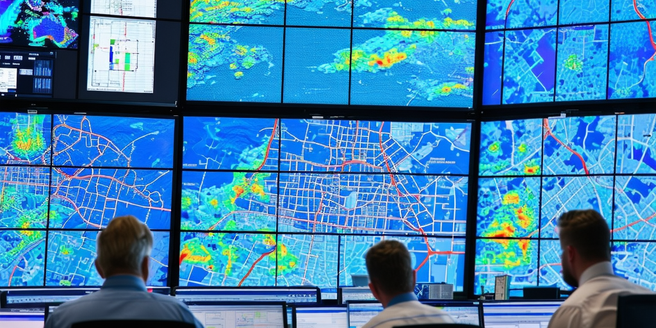
Understanding Extreme Rainfall Patterns
With climate change, extreme rainfall events are becoming more frequent and intense. Understanding these patterns is crucial for urban planning. Meteorologists use various models to predict rainfall, taking into account historical data and current atmospheric conditions. Advances in technology have significantly enhanced the accuracy of these predictions. This improvement in forecasting provides valuable insights for emergency response teams. As a result, cities can implement more effective water management systems. These patterns help urban planners design infrastructure that can withstand deluges, preventing flooding and minimizing damage. By studying rainfall patterns, cities can better prepare for future storms, ensuring safety and resilience.
The Impact of Heavy Rain on Urban Areas
Heavy rainfall can overwhelm urban infrastructures, causing floods and disruptions. Roads may become impassable, drainage systems overloaded, and buildings at risk of water damage. The economic and social costs can burden communities for years. These events not only pose immediate hazards but also have long-term economic impacts due to repair and recovery costs. As climate change continues to exacerbate weather patterns, the frequency of such events may increase. Therefore, it is crucial for local governments and communities to work together in developing sustainable solutions. Urban planners must anticipate these challenges, integrating strategies to mitigate potential damage and enhance urban resilience against heavy rainfall.
Innovative Drainage Solutions for Cities
As cities face increased rainfall, innovative drainage solutions become vital. This shift in environmental conditions necessitates a proactive approach from urban planners. It’s crucial for cities to adapt quickly to these changes to protect their infrastructure and residents. Permeable pavements, green roofs, and retention basins are examples of such strategies. These methods not only improve water management but also contribute to urban biodiversity. By allowing water to infiltrate or be temporarily stored, these solutions reduce runoff and help manage rainwater effectively. Urban planners must incorporate these technologies into city designs to minimize flooding risk and enhance water management, ensuring sustainable urban growth.
Incorporating Green Spaces for Water Management
Green spaces play a pivotal role in urban water management. Parks, wetlands, and gardens can absorb rainfall, reducing runoff and the burden on drainage systems. They also help to cool urban areas, alleviating the heat island effect commonly seen in cities. They serve as essential buffers against the increasing challenges posed by climate change. These natural solutions not only mitigate flooding risk but also improve air quality and provide recreational spaces for residents. Urban planners should prioritize the integration of green spaces in city developments to enhance environmental resilience and foster a healthier lifestyle.
Technological Tools in Flood Prevention
Technological advancements offer powerful tools for flood prevention, which are becoming increasingly essential in our rapidly changing climate. Sensors, AI, and GIS systems work together to provide real-time data, enabling quick responses to unexpected rainfall events that can otherwise lead to devastating floods. These cutting-edge technologies allow for accurate monitoring and prediction of potential flood scenarios, which in turn facilitates effective planning and mitigation strategies. Urban planners can leverage these tools to enhance flood management systems, ensuring that cities are not only prepared for extreme weather conditions but also resilient in the face of such challenges. By integrating these systems into their long-term urban development plans, cities can minimize flood risks and protect their infrastructure and communities. Furthermore, these technologies offer the potential to transform our approach to water management, encouraging a more sustainable and proactive stance in combating climate change-induced weather anomalies.
Policy Changes to Support Stormwater Management
Effective stormwater management requires supportive policy changes to address challenges posed by urbanization and climate change. Governments need to establish regulations that promote sustainable building practices and encourage the adoption of green infrastructure like permeable pavements, green roofs, and rain gardens. These practices help mitigate flood risks, enhance water quality, and support biodiversity within urban areas. Incentives for businesses and developers can drive large-scale improvements by making eco-friendly development financially attractive. Tax breaks, grants, or low-interest loans can motivate private sector participation in sustainable urban planning. Policymakers play a crucial role in shaping urban resilience by enacting policies for comprehensive stormwater management, ensuring cities can handle extreme weather events. Collaboration between government and the private sector is essential for a unified approach. Public awareness campaigns can also educate the community about their role, fostering a shared sense of responsibility for healthier urban environments.
